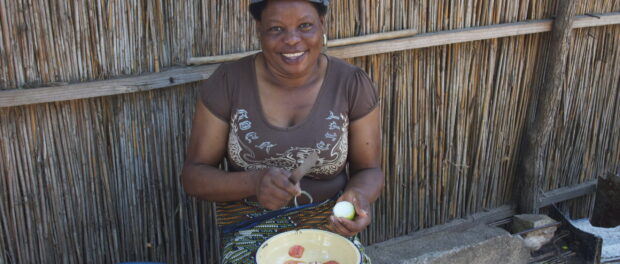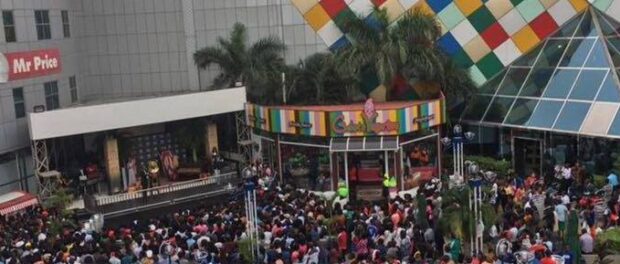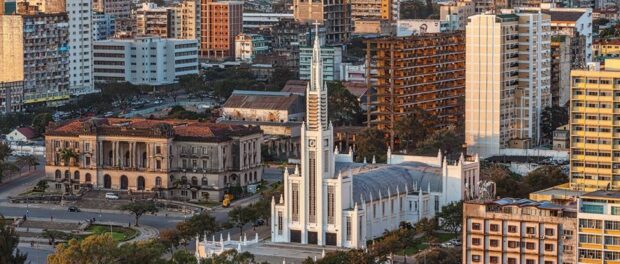
This is the first article in a three-part series on the connections between Rio de Janeiro’s favelas and Maputo’s caniços, focusing on history, land regularization, and culture.
In addition to having Portuguese as its official language, Mozambique shares countless similarities with Brazil. Most evident, especially in the urban context of the capital Maputo, are the passion for television soap operas produced by Globo and Record and the large influence of evangelical churches (including the Universal Church, of which the Mayor of Rio de Janeiro is a bishop, and the Assembly of God of Brazil). But the parallels also extend to the challenges of territorial regulation and the creative potential of their informal communities.
Maputo, when it was still known as Lourenço Marques in the era of Portuguese colonization (which only ended in 1975 with the declaration of independence), was divided between the cidade cimento (cement city) and the cidade caniço (reed city). The cidade cimento reflected the material used in that part of the city and alluded to the permanence of the city built for the settlers. On the other hand, caniço, a plant similar to cane, referred to one of the materials used in the houses surrounding the city itself, reinforcing the temporary nature of a city built to be removed at any moment in order to allow for the expansion of the cement city. Therefore, the peripheral urban communities were born in the midst of uncertainty about their permanence and the fear of eviction.
Movement between the two parts of the city was limited: the only people who could pass from the caniço to cimento were “assimilated” black people, those who were considered sufficiently civilized and well-behaved. By European standards, this meant that only those who spoke Portuguese, who were Christians, “good-natured,” and who ate and dressed the same as the Portuguese were allowed. For those considered “indigenous” and of lower education, access was only allowed if they presented documentation stamped by their boss. White people from the cimento frequented the caniço for business and, often, for brothels. Migrants from the countryside and from the country’s other cities also flowed into the cidade caniço. They were often from different ethnic and linguistic backgrounds. Thus, the caniço settlements were constructed in a similar manner to the favelas, as a place of encounters, of diversity, of mixed-race families, reflected in theses spaces’ intense cultural expressions.
Although there is no longer such a distinction in the material used and Maputo has expanded beyond the limits of the cidade caniço, this dichotomy still exists today in the population’s imaginary and in the names of neighborhoods like Polana Cimento, an elite neighborhood where one can find a majority of the expatriate community and government offices, and Polana Caniço, a lower-middle-class neighborhood, which is now suffering sharp increases in land value due to new real estate developments.
This divided city resembles another, on the other side of the ocean: the divided city of Rio de Janeiro with the asfalto (or “asphalt,” term commonly used to describe the formal city) and the favela (term coined in 1897 also based on the name of a plant–the robust shrubby favela bushes of Brazil’s arid northeast where Rio’s first official favela’s settlers came from).
Although not institutionalized in the form of examinations that measured the moral qualities of individuals, structural barriers acted and continue to act to constrain the access of favela residents to the rest of the city, which is generally allowed only during regular business hours. The presence of favela residents outside favela spaces is hampered by the price and routing of transport, by prejudicial stares, and by the actions of shopping mall security personnel, for example.
It is estimated that 80% of Maputo’s population lives in so-called informal settlements, compared to 23% of Rio de Janeiro’s population. In absolute terms, this equates to around 1 million people in Maputo, and about 1.5 million in Rio de Janeiro. The challenges faced by the communities in Maputo stem from the public neglect of these dense areas, and they include a lack of access roads and basic services, such as garbage collection and sewerage systems, a lack of drainage systems such that floods are frequent, and an unreliable supply of water and energy.
This is the first article in a three-part series focused on the connections between Rio de Janeiro’s favelas and Maputo’s caniços that focus on history, land regularization and culture.


